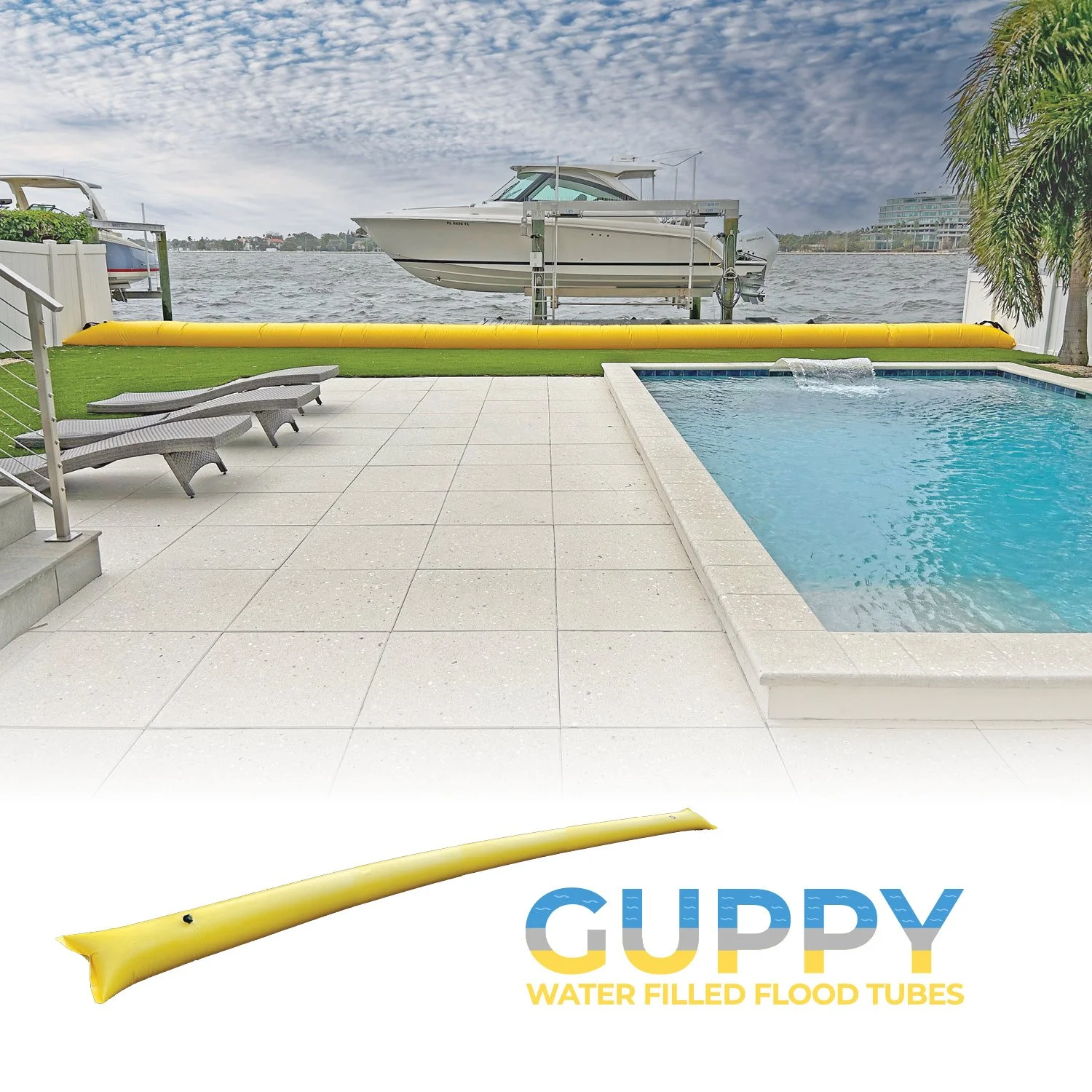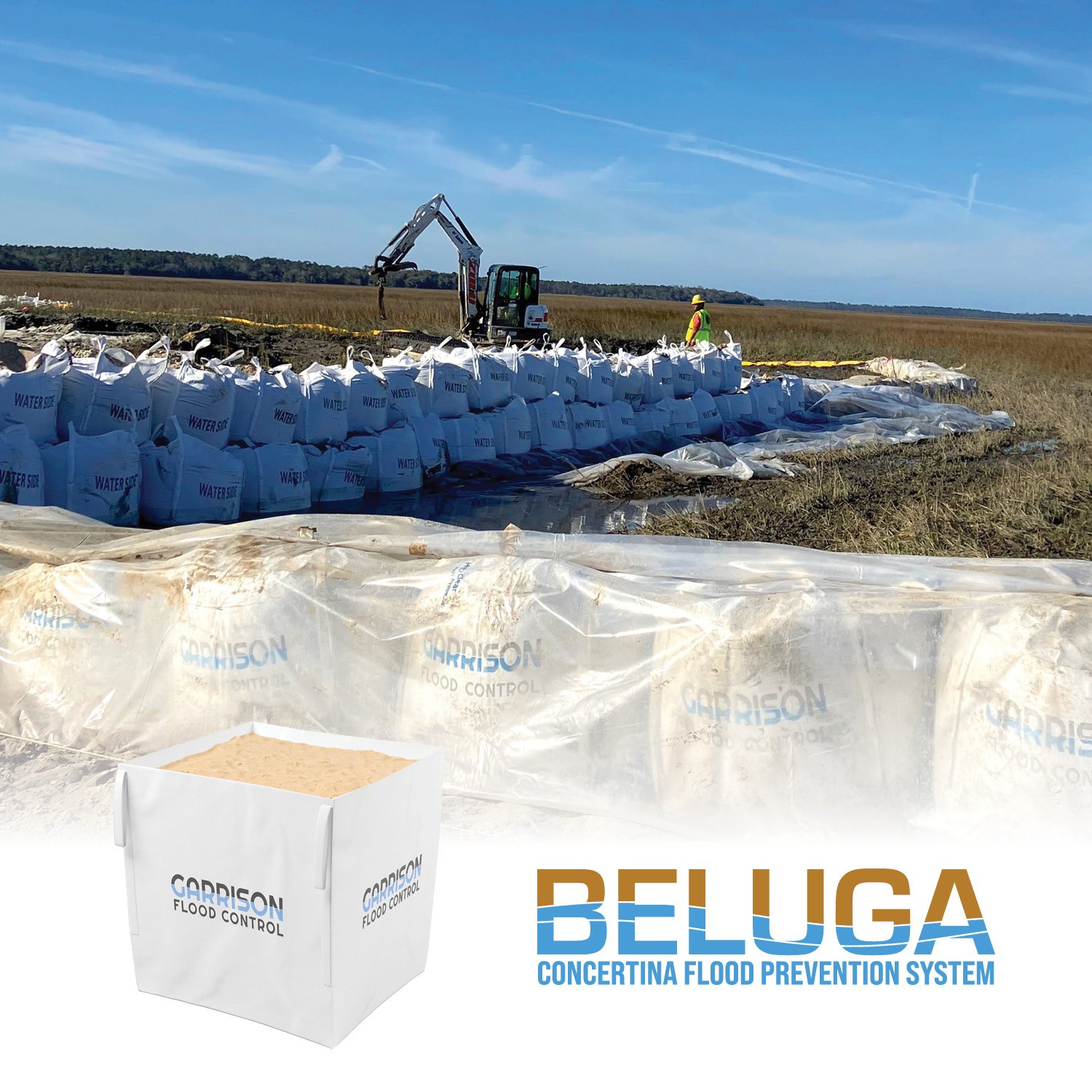The Top 10 Coastal U.S. Cities With The Highest Risk of Storm Surge
To help coastal residents, businesses, communities and municipalities understand where flood risks are highest, we’ve compiled a list of the top 10 U.S. coastal cities most at risk for storm surge flooding.
Coastal living offers beautiful views and a relaxing lifestyle—but it also comes with risks, especially when hurricane season rolls around. One of the most devastating threats is storm surge: the abnormal rise of seawater generated by powerful storms. Unlike regular flooding, storm surge can inundate coastal communities in hours, sweeping away homes, businesses, and critical infrastructure.
If you live or own property in one of these areas, it's crucial to prepare in advance—and we’ll share how Garrison Flood Control can help protect what matters most.
Source: ClimateCentral.org
1. Miami Beach, Florida
Miami Beach is a world-famous destination known for its beaches, nightlife, and Art Deco architecture. But behind the glamour lies a growing threat from storm surge flooding.
The city sits just a few feet above sea level, making it highly susceptible to even moderate hurricanes. Combined with climate change and rising sea levels, Miami Beach is seeing more frequent and severe flood events, which threaten homes, businesses, and critical infrastructure every hurricane season.
Historical Peak Surge: 9.45 feet during Hurricane Irma (2017)
At-Risk Population: Over 90,000 residents (NOAA)
Sea-Level Rise Projection: 10-17 inches by 2040 (Southeast Florida Regional Climate Compact)
Source: ClimateCentral.org
Source: FloodVision RiskViewer | ClimateCentral.org
2. New Orleans, Louisiana:
New Orleans is synonymous with flood risk, and for good reason. Much of the city lies below sea level, protected by levees and flood walls that have been tested repeatedly by hurricanes. Hurricane Katrina in 2005 was a stark reminder of the catastrophic potential of storm surge, when levee breaches flooded 80% of the city. Even with improved flood defenses, New Orleans remains one of the most vulnerable cities in the country, requiring constant vigilance and preparation.
Historical Peak Surge: 28 feet during Hurricane Katrina (2005)
At-Risk Area: 50% of the city is below sea level (NOAA)
Estimated Damage (Katrina): $125 billion (FEMA)
Source: ClimateCentral.org
Source: FloodVision RiskViewer | ClimateCentral.org
3. Charleston, South Carolina
Charleston’s beautiful historic district and waterfront appeal draw millions of visitors annually, but its coastal geography places it squarely in the crosshairs of storm surge flooding. The city is vulnerable not only to hurricanes but also to “king tides” and frequent nuisance flooding. Charleston’s complex waterways and low-lying areas make storm surge a major threat during tropical storms, which can overwhelm drainage systems and inundate entire neighborhoods.
Historical Peak Surge: 12 feet during Hurricane Hugo (1989)
Flood Events: Over 50 flood advisories annually (City of Charleston)
Tide Increase: “Sunny day” flooding has increased 220% since 2000 (NOAA)
Source: ClimateCentral.org
Source: FloodVision RiskViewer | ClimateCentral.org
4. Galveston, Texas
Galveston sits on a barrier island off the Texas Gulf Coast and has a long history of devastating hurricanes. The city’s flat topography and exposure to open water make it extremely vulnerable to storm surge flooding. Galveston famously built a massive seawall after the catastrophic hurricane of 1900, but as storms have intensified, the city continues to face significant flood threats that challenge even its best defenses.
Historical Peak Surge: 15.7 feet during Hurricane Ike (2008)
Infrastructure: 17-foot seawall built post-1900 disaster (Galveston Historical Foundation)
Population: ~50,000 residents at risk (US Census)
Source: ClimateCentral.org
Source: FloodVision RiskViewer | ClimateCentral.org
5. Virginia Beach, Virginia
Virginia Beach is a bustling coastal city with a growing population and a popular vacation spot. Its unique geography, located at the meeting point of the Atlantic Ocean and the Chesapeake Bay, creates an especially high risk of storm surge flooding. The area’s flat land and dense development amplify the impacts of storm surges, which can damage homes, businesses, and critical infrastructure across the city.
Historical Peak Surge: 8.76 feet during Hurricane Isabel (2003)
At-Risk Homes: 35,000+ properties identified as flood-prone (FEMA)
Repetitive Loss Properties: 10% of Virginia’s total (Virginia Dept. of Conservation)
Source: ClimateCentral.org
Source: FloodVision RiskViewer | ClimateCentral.org
6. Atlantic City, New Jersey
Atlantic City’s famous boardwalk and casinos make it one of the most recognized coastal cities in the Northeast, but its location on a barrier island exposes it to severe storm surge flooding. Superstorm Sandy in 2012 delivered a devastating blow, flooding streets, damaging homes and businesses, and showing how vulnerable the city remains to coastal storms.
Historical Peak Surge: 8.9 feet during Superstorm Sandy (2012)
Damage (Sandy): $50+ billion across NJ/NY area (NOAA)
Coastal Erosion: Losing ~1.5 feet of beach annually (USGS)
Source: ClimateCentral.org
Source: FloodVision RiskViewer | ClimateCentral.org
7. Biloxi, Mississippi
Biloxi, with its beachfront casinos and resorts, is a major Gulf Coast destination—but it is also at extreme risk of storm surge flooding. Hurricane Katrina was a grim reminder of the city’s vulnerability, when walls of water swept inland and caused catastrophic damage. Biloxi’s location and low elevation mean even less powerful storms can create major flooding events.
Historical Peak Surge: 27.8 feet during Hurricane Katrina (2005)
Population at Risk: ~46% of residents live in flood zones (City of Biloxi)
Critical Infrastructure: Many casinos/hotels are at shoreline level (Biloxi Chamber)
Source: ClimateCentral.org
Source: FloodVision RiskViewer | ClimateCentral.org
8. Key West, Florida
As the southernmost city in the continental U.S., Key West is uniquely exposed to the elements. The island’s flat terrain and proximity to both the Atlantic Ocean and Gulf of Mexico mean that storm surge flooding is a constant threat. With limited evacuation routes and infrastructure at sea level, the city requires vigilant flood planning every hurricane season.
Historical Peak Surge: 6.6 feet during Hurricane Irma (2017)
Elevation: Average of 3 feet above sea level (USGS)
Sea-Level Rise: Expected 14-18 inches by 2040 (South Florida Water Management District)
Source: ClimateCentral.org
Source: FloodVision RiskViewer | ClimateCentral.org
9. Jacksonville, Florida
Jacksonville may not be the first city that comes to mind for hurricane damage, but its size and location make it highly vulnerable to storm surge flooding. The city’s proximity to both the Atlantic Ocean and the St. Johns River means that tropical storms can create dual flooding threats—coastal surge and river flooding—both of which can cause extensive property damage across the metropolitan area.
Historical Peak Surge: 5 feet during Hurricane Irma (2017)
River Surge: St. Johns River prone to backflow flooding (USACE)
Flood-Prone Properties: ~90,000 properties (FEMA)
Source: ClimateCentral.org
Source: FloodVision RiskViewer | ClimateCentral.org
10. Baton Rouge, Louisiana
Though located about 80 miles from the Gulf Coast, Baton Rouge remains at risk due to its position along the Mississippi River. During hurricanes, storm surge can push upriver and cause significant flooding, especially when combined with heavy rainfall. Baton Rouge’s flood risk may be underestimated, but it remains a critical concern for emergency managers and residents alike.
Historical Surge Impact: Back-flow flooding via Mississippi River (Katrina 2005)
Distance from Coast: ~80 miles but still at risk (NOAA)
Population at Risk: ~28% live in mapped flood zones (City of Baton Rouge)
Source: ClimateCentral.org
Source: FloodVision RiskViewer | ClimateCentral.org
Prepare For Coastal Storm Surge Flooding with
Garrison™ Flood Control’s Solutions
Watch The Video on The Top 10 Coastal U.S. Cities at Risk For Storm Surge
No matter where you and your community is located, Garrison Flood Control specializes in providing optimal flood protection solutions to homeowners, businesses, municipalities and more.
Garrison™ Flood Control is a United States based manufacturer and distributor of a range of innovative and economical flood control products suited for different needs. Garrison products contain, divert, and re-route water away from valuable property, equipment, infrastructure, and facilities and help prevent flood damage due to rising water levels.
Flooding is the number one most common natural disaster in the U.S. and world and our mission is to aid in the emergency management and preparedness of future flood events.
CONTACT US and work with our team of dedicated experts who can provide the most ideal recommendations to help you prepare for future flood events.
If you would like additional information about Garrison™ Flood Control Systems, please call 929-299-2099 or email sales@garrisonflood.com.











































